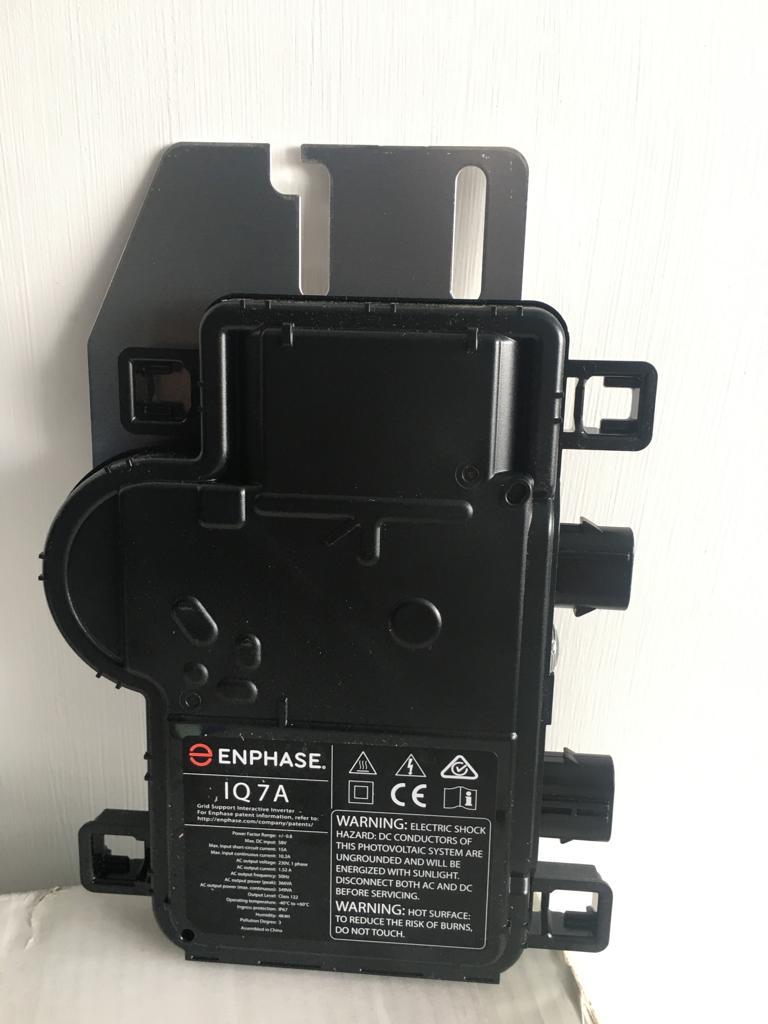
Micro inverters are a type of solar inverter that is individually connected to each panel and converts the DC that makes up that panel into AC. The outputs from all the micro-inverters are consumed by different electrical loads. Micro-inverters have a monitoring device that allows each inverter to record performance measurements and errors, wirelessly send the data to the manufacturer server to be displayed online or store data locally. When selecting this monitoring feature, check to see if the manufacturer charges for the service.
HOW DO MICRO INVERTERS WORK?
"Micro" means small. The term "micro" applies to both renewable energy and the photovoltaic system on your roof - micro-inverters are very small solar inverters.
Solar inverters convert direct current (DC) from your solar panels to alternating current (AC) used by your home appliances.
In typical string inverter systems, the solar modules are wired together and fed into a single inverter. In this configuration, solar power output depends on the performance of the worst-performing panel, as they are all classified as one set.
However, instead of being close to your fuse box, micro inverters are designed behind each panel in your solar array. Enphase Energy was the pioneer behind solar microinverter technology. They have been making these small inverters for the solar system since 2008.
Micro inverters capture all available power from each solar panel, convert it to onsite AC, and then send it to your fuse box and electric grid. This makes your solar panel system more efficient because even if some of your panels have shading issues, it will not affect your overall output.
Advantages of Micro Inverter systems
• Micro inverters have a 25-year warranty
The inverter is the most expensive component in the solar system and is more likely to fail. As long as you do your solar panels for micro inverters - it’s nice to know that they have a 25 year warranty. Other inverter technologies, such as string and hybrid inverters, have a warranty of just 8 to 12 years.
• Panel-integrated micro inverters are easy to install
Solar panel manufacturers incorporate micro-inverters into their panels to make installation easier for installers. All that needs to be done is wiring the panels to one another and the system is ready to go..
This will significantly reduce the cost of your installation, as working hours are an important part of your investment.
• Performance monitoring
Since micro inverters are placed behind every panel in your PV system, you can track individual panel performance using your Smartphone. Smart applications like the Enphase Enlighten system can notify you when your electricity performance is less than expected.
For example, if the current weather is clear and sunny, and your panels are performing as if it were a cloudy day, you’ll get notification that your panels are not producing in their normal range. In this way, you can check for possible debris, bird poop, or equipment damage which may be impacting your system’s performance.
Disadvantages of micro inverter systems
• Micro inverters cost more than other inverters
• Panel-level performance monitoring may not be available without an upgrade
• Less suitable for battery backup systems
Micro inverters with smaller array sizes are common, and maximizing performance from all panels is a concern. The most successful in the residential market are micro inverters, where limited space for panels limits array size, and shading from nearby trees or other objects is often a problem.
